We’ll see you in there.
Connect to customize your food & drink discovery.
By signing up you agree to our Terms of Service and Privacy Policy.
Sushi
Sushi Yūgen
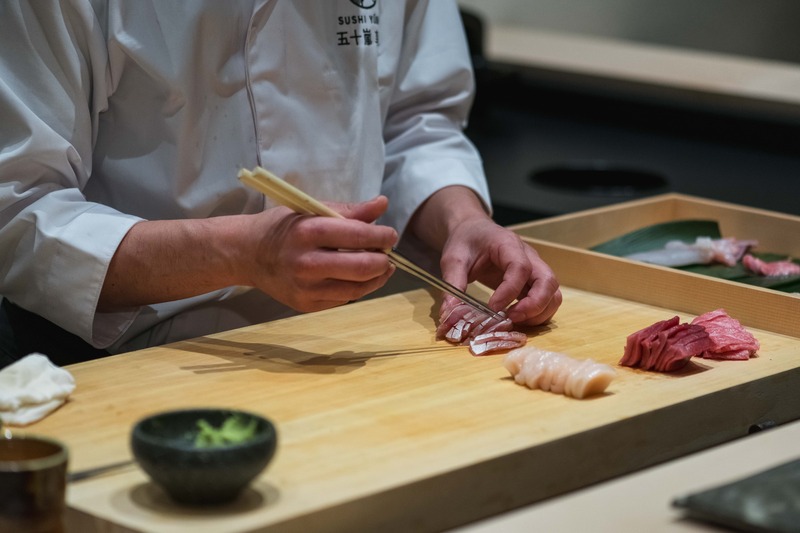
Sometimes Toronto is full of surprises. Such as the fact that inside the lobby of a generic, early ‘80s, office tower in the Financial District is a wooden terrace with a miniature garden of bonsai trees, the portal to a new, and unique, Japanese restaurant specializing in omakase.
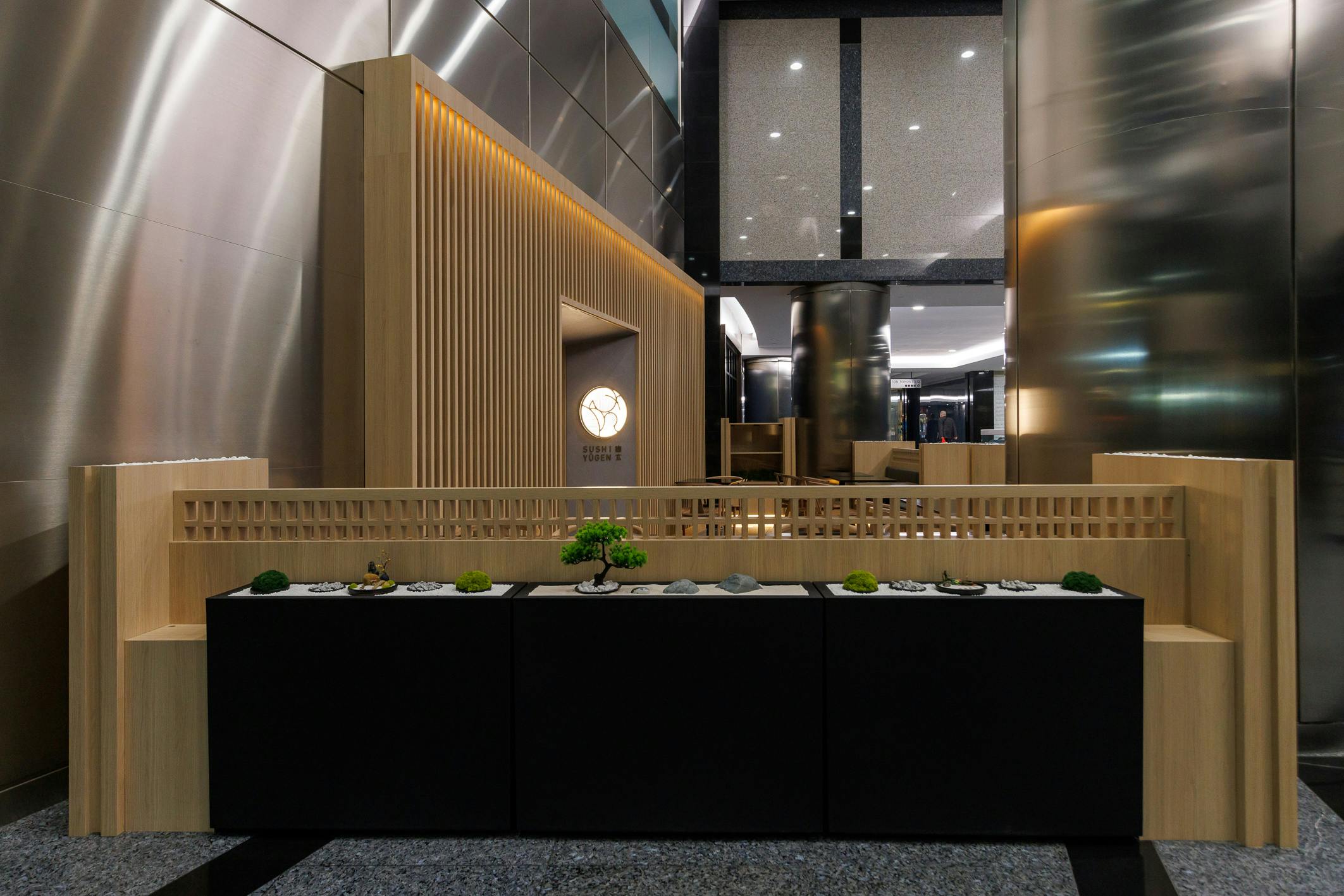
The restaurant’s name – Sushi Yūgen – is auspicious. Like many Japanese words that are also Buddhist-influenced concepts, yūgen is tricky to translate, its meaning both complex and mutable depending on the context. But a workable definition is an awareness of the Universe that triggers emotional responses too profound, powerful and mysterious for words.
Chances are you’re not expecting profundity, power or mystery when you head to the busy downtown corner of York and Adelaide for a meal, even one in which multiple courses of sushi and sashimi are involved. But Sushi Yūgen’s owners, Rocco Wang and Kamen Sun, are determined to thwart your expectations.

The thwarting begins, as does the yūgen, as soon as you enter the restaurant’s interior, leaving the office tower, the Financial District, and even Toronto, far behind. Light oak fixtures, furnishings and soft white walls create a Zen climate that immediately soothes. Handcrafted stoneware and blossoming orchids add elements of nurture and Nature to the minimalist aesthetic. Poetry is supplied by an illuminated installation whose semicircular patterns conjure sunrise and sunset and a Japanese maple tree whose leaves reveal themselves to be 500 immaculately folded origami cranes.
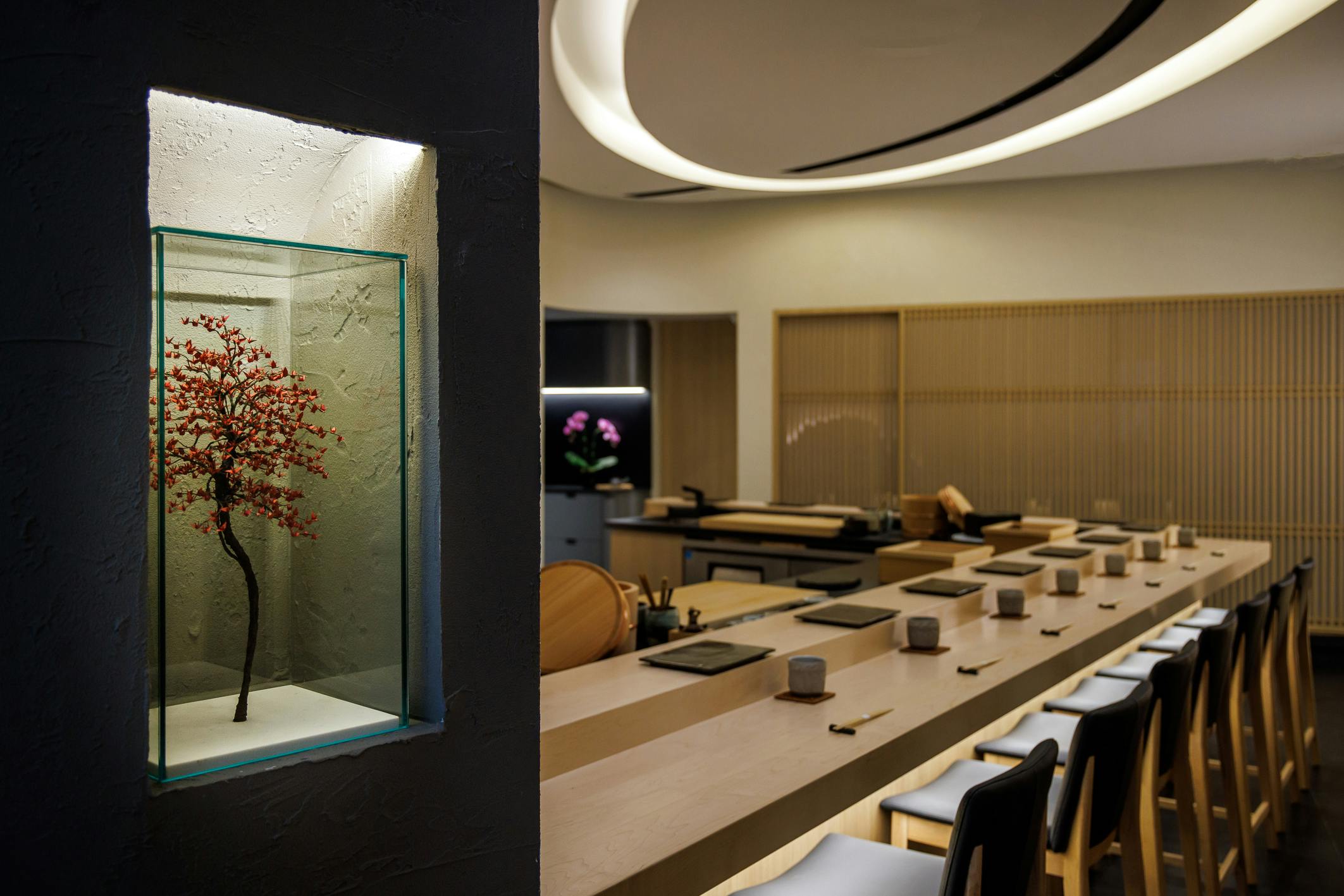
Anchoring this main room is a sushi counter with room for 12 where you can linger – albeit not too long; lunch sittings ($80 per person) last 45 minutes and dinner ($100) one hour – over a fixed omakase menu. Omakase – Japanese for “I leave it up to you” – refers to giving a sushi chef carte blanche to prepare premium-quality, fresh, seasonal fish and other ingredients in a signature style that emphasizes both technique and creativity. At Sushi Yūgen, the premium-quality fish – almost all of it flown in fresh from Japan – arrives in the form of 10 immaculately prepared nigiri, along with a hand roll, miso soup, dessert and (at dinner) an appetizer.
A sliding wooden screen separates the main dining room from a second, more intimate, almost secret room, dominated by a second sushi bar, with just enough space for eight (lucky) diners. Presided over by executive chef Kyohei Igarashi, it’s here that the yūgen really kicks into high gear.
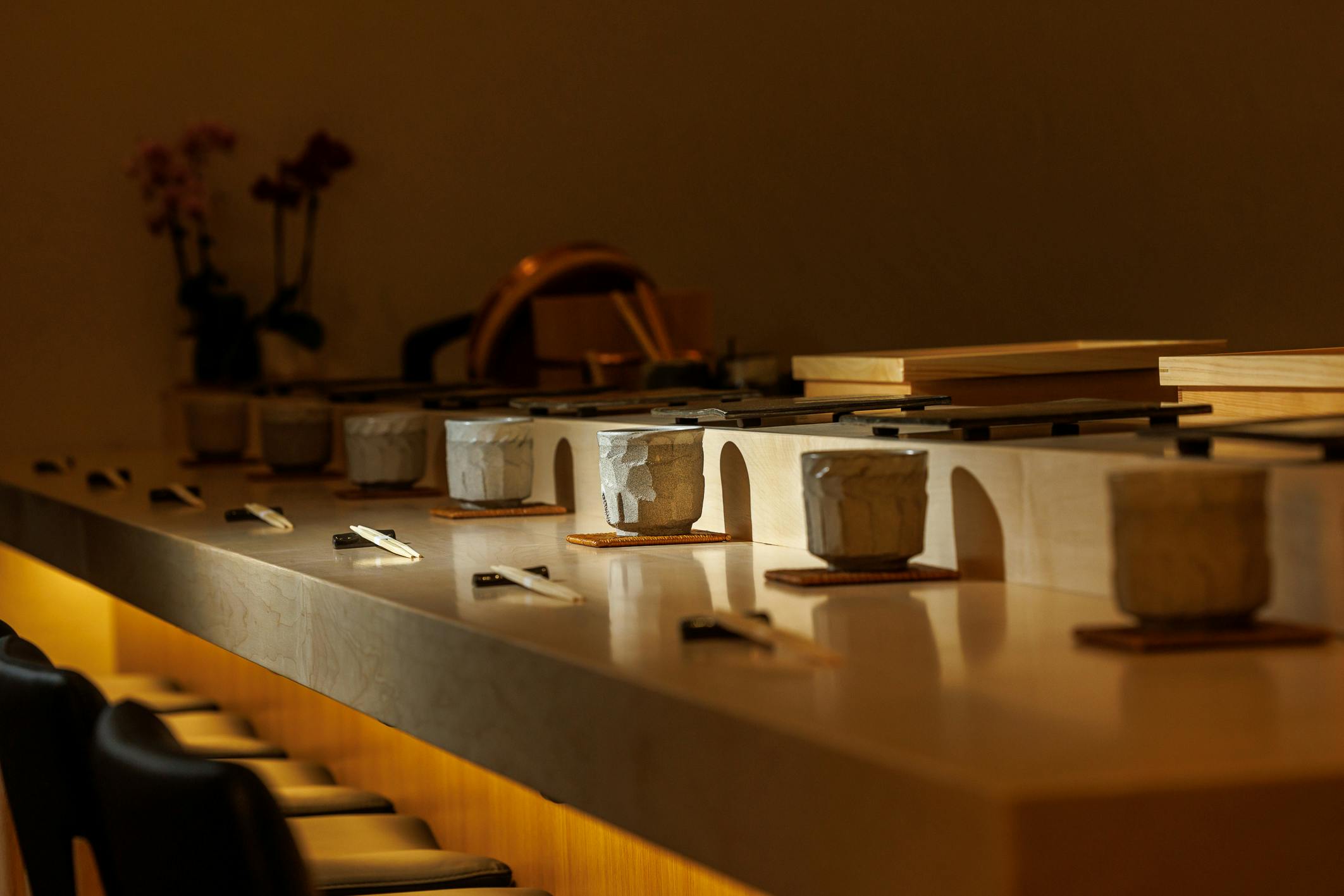
Sun’s professional background is in accounting. However, growing up, she shared countless fine dining experiences with her father. Fuelled by those memories, when she decided to make a radical career change and open her first-ver restaurant, Igarashi was at the top of her list to helm a kitchen devoted to rarefied Japanese dining. “Toronto has many good Japanese restaurants. And currently the number is really growing” she points out. “But what Chef Igarashi does is very distinctive.”
What Chef Igarashi does is preside over an omakase menu that is not just about omakase. Nor is it just about sushi. In more than 15 years of working in Japan and another nine abroad – including at a Michelin-starred restaurant – he has had ample time to hone his technical and creative skills, with respect to sushi, but also to kaiseki.

A traditional Japanese multi-course meal whose main inspiration is shun, a philosophy that emphasizes enjoying ingredients at their peak freshness, kaiseki also refers to a variety of specific techniques used to prepare such meals, whose Western equivalent is haute cuisine. Aside from the seasons, kaiseki also draws upon centuries-old culinary traditions such as the ornate banquets of the Japanese imperial court and samurai households as well as simpler elements from tea ceremonies and Buddhist temple cuisine.
Both simplicity and ornateness are in full force when you sit down at Chef Igarashi’s counter to embark upon a two-and-a-half hour, 17-to-22-course omakase journey.

The voyage begins with gracious servers, clad in resplendent kimonos, offering hot, cleansing and fragrant oshiburi towels and equally hot, cleansing and fragrant tea, the latter served in exquisitely crafted yunomis (tea cups).
Although you can happily stick with tea, there’s also premium sake, including some prized, limited edition varieties that you’ll definitely never get your hands on at the LCBO. Available by the glass, in cocktail form (with the likes of matcha, yuzu, and lychees), by the bottle, or in flights, the various sakes can also be paired with the courses of the Chef’s counter menu.
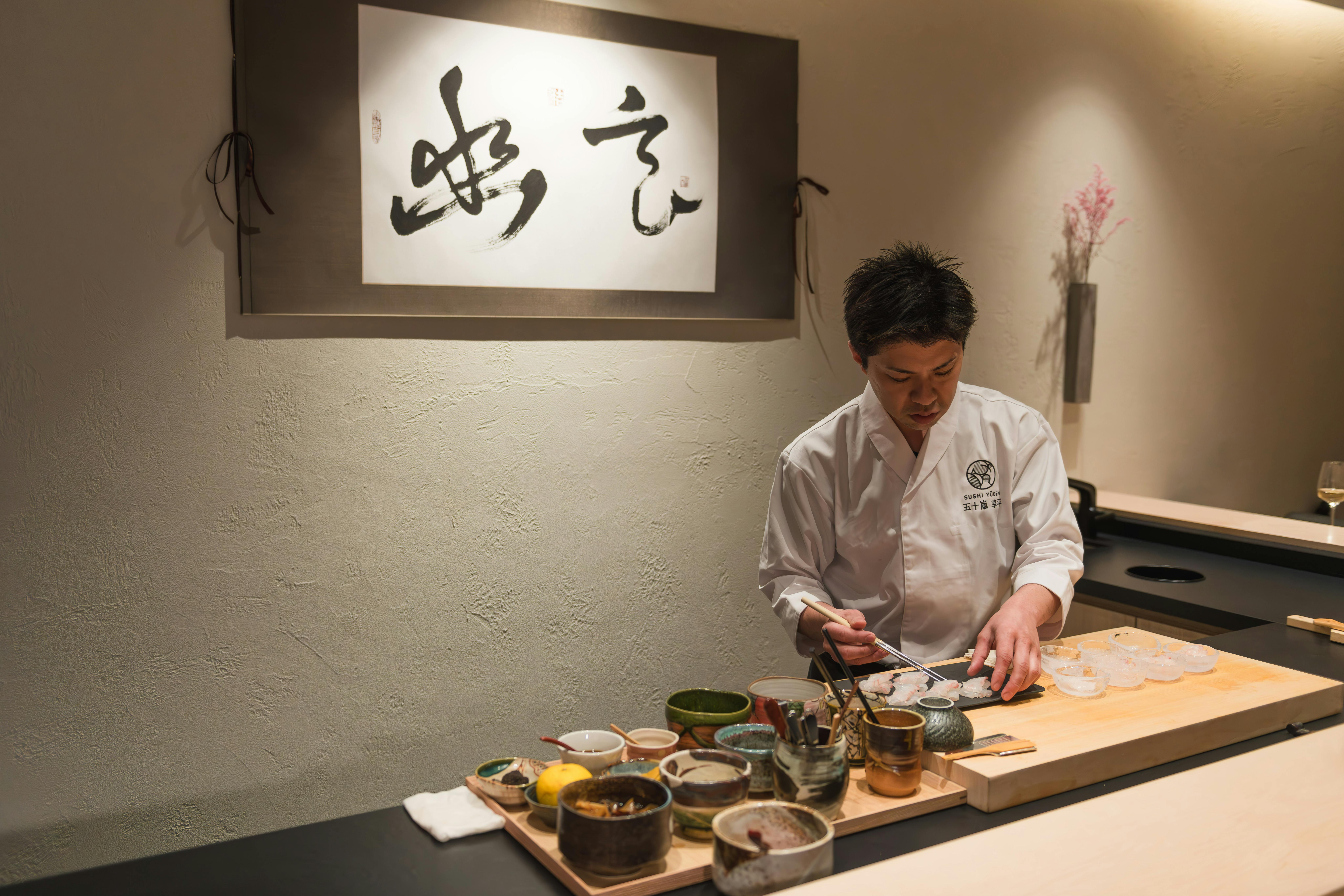
The menu itself is divided into two dramatic and memorable acts. The opening act, consisting of a half-dozen courses, is devoted to the kaiseki portion of the menu and is where Chef Igarashi gives full reign to his creativity.

The parade of appetizers begins on an unexpected note: a glass of tomato jelly, made with Ontario-grown organic tomatoes, filtered with tomato juice and garnished with fresh mint and tomato dust. Elegantly jiggly and vibrating with sweet, sun-drenched, tomato zing, it’s a wildly refreshing palate opener.
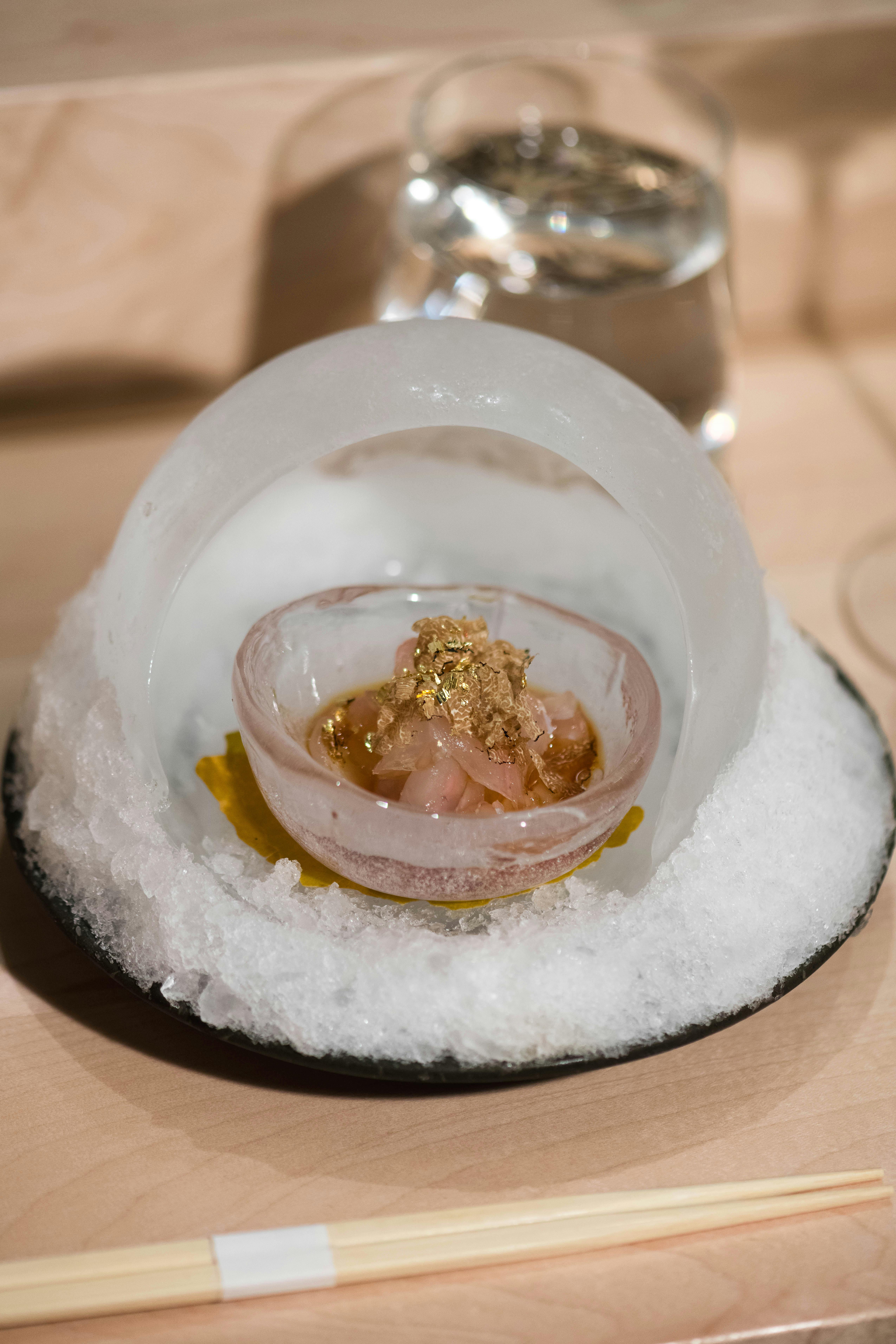
You’ll want your palate to be wide open in order to savour the shiromi truffle, Japanese flounder swimming in a bold truffle sauce, topped with shaved Burgundy truffles, kelp salt and flakes of gold leaf. To keep the fish at an optimally cool temperature, the dish is served in a splendidly sculpted ice dome that blends the functional with the fantastical.
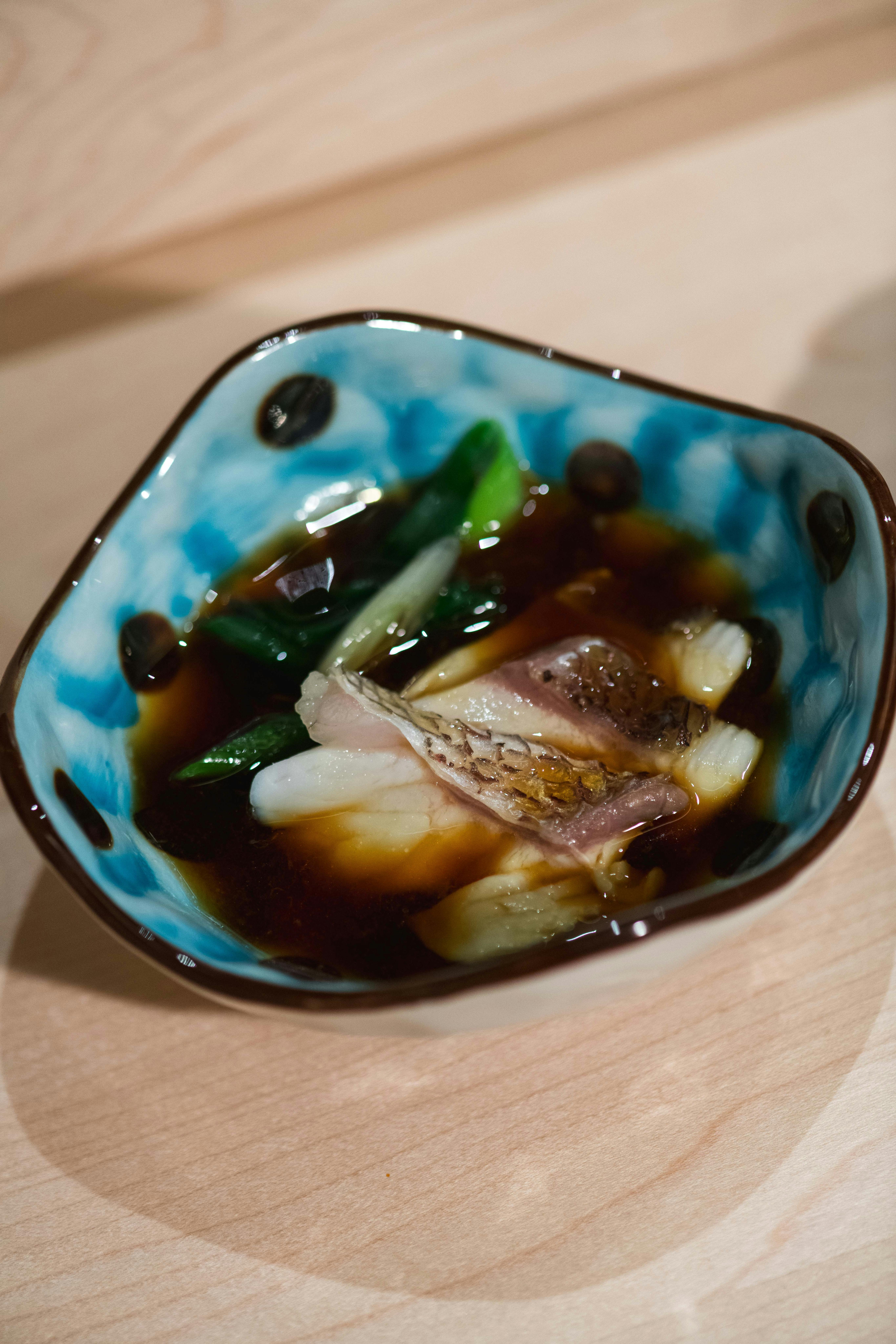
Take advantage of the fact that your jaw is still dropped to fill your mouth with the next course: madal no shabu shabu. Tenderly poached slices of sea bream are bathed in a tangy ponzu sauce and sprinkled with Kyoto green onions. A side of yuzu kosho, a fermented paste made from citrusy yuzu fruit and green chilis, offers the potential of more piquancy.

Noodles and broth might initially elicit a “been there, slurped that” reaction. But when a delicate bowl of ultra-fine soumen noodles, topped with mitsuba, edible flowers and myoga ginger, is surrounded by a pool of golden broth distilled from three different types of fish dashi, all bets are off. Handcrafted with wheat flour, the noodles are unexpectedly nutty and wonderfully chewy. The clear and intensely flavoured broth is so tantalizing you’ll want to dive right in.
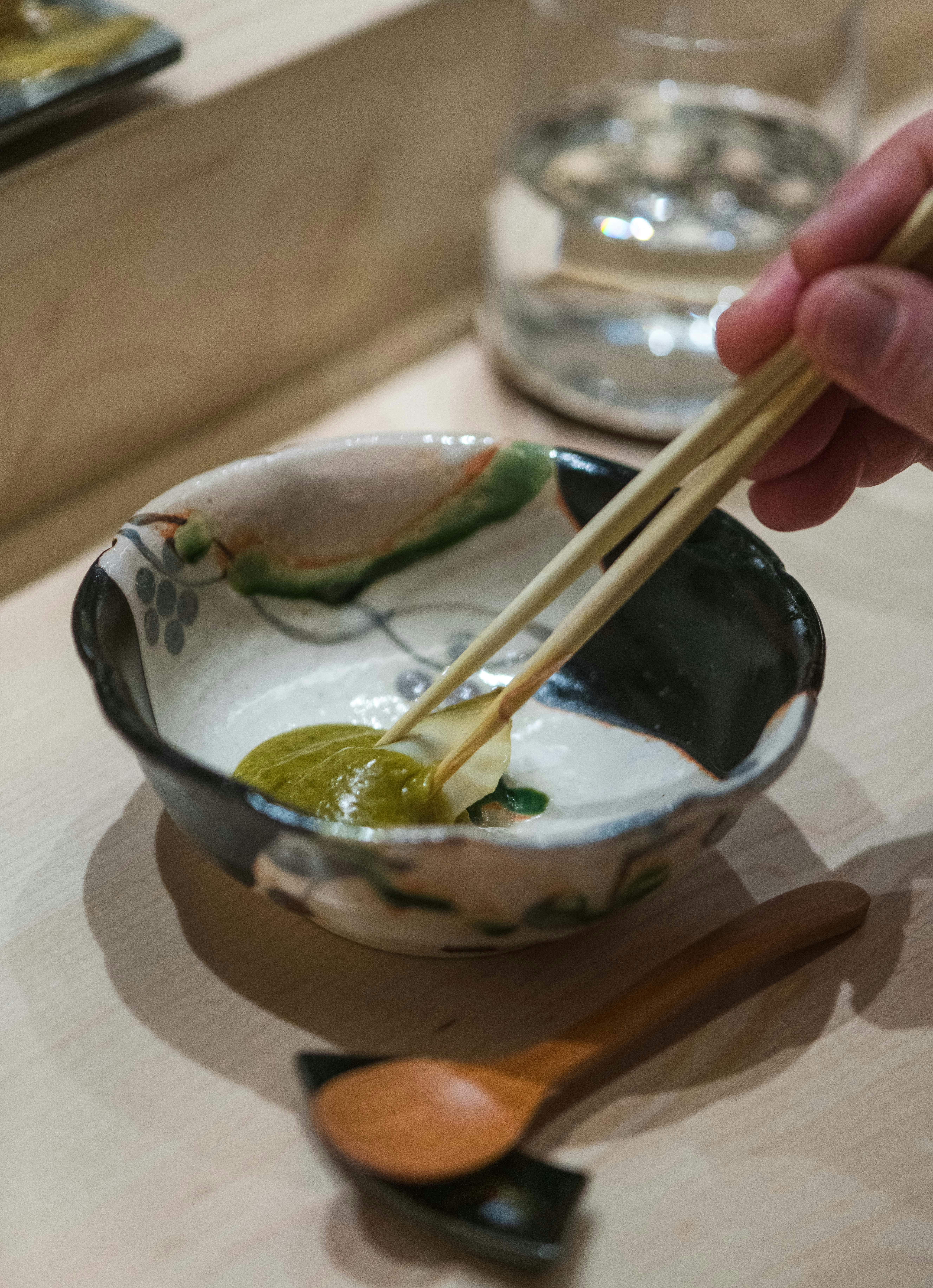
Chances are, any awabi (abalone) you’ve tasted outside Japan has been dried or frozen. Sushi Yūgen might be the only place in Canada where it’s served intoxicatingly fresh and wild, accompanied by a rich, earthy sauce made from its liver. The abalone is the very epitome of the word “delicacy.” The sauce is so sublime that you’re instructed to leave some in your bowl – to be mixed with a serving of textured rice, becoming a worthy course unto itself.
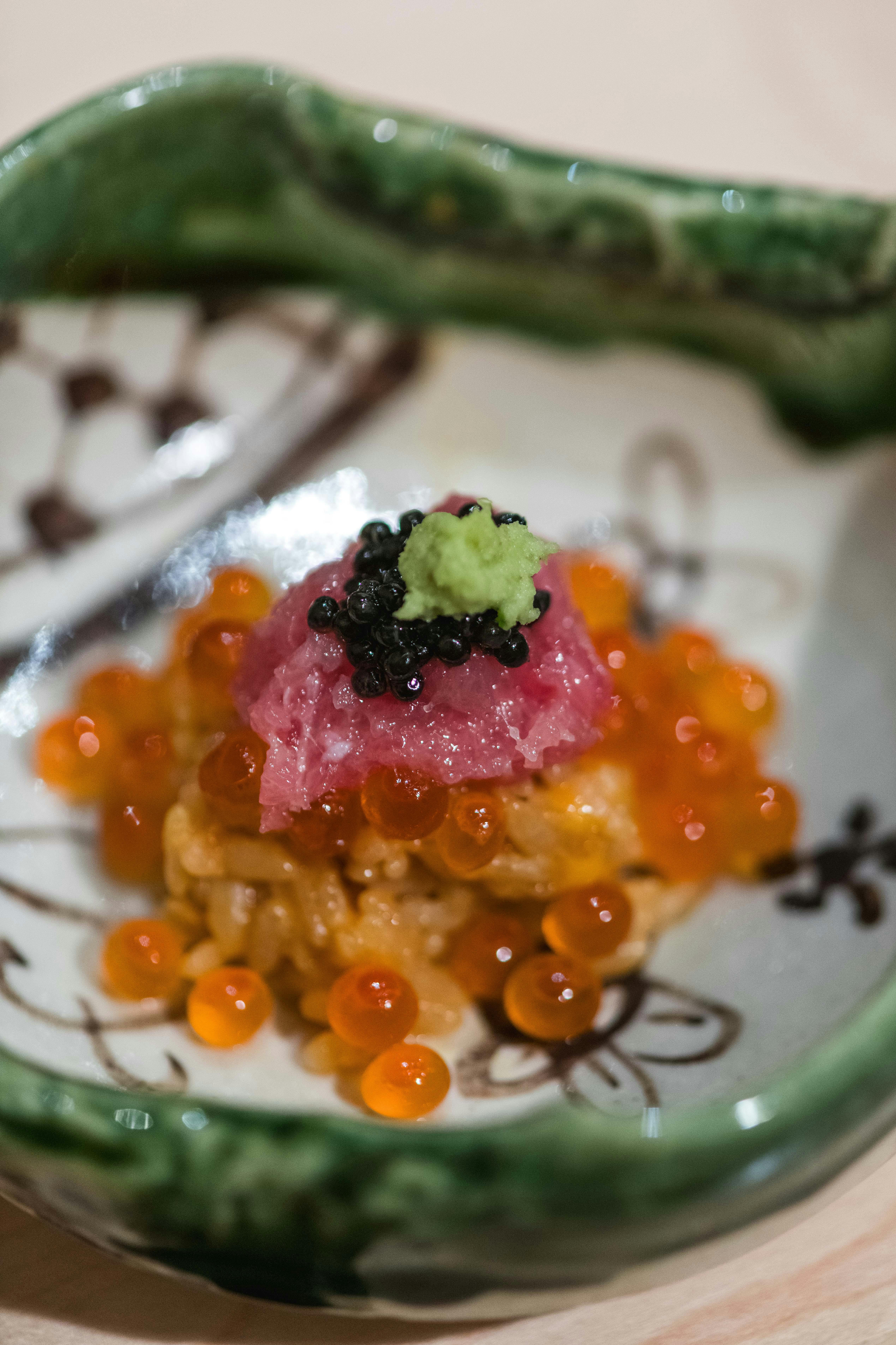
Last, but so definitely not least of the appetizers is uni goban, a bowl of rice and sweet Hokkaido sea urchin piled high with luxurious layers of glistening salmon roe, otoro (fatty tuna), black caviar and a dollop of shaved wasabi. Despite the pristine balancing act, you’re actually meant to make a mess of it all before digging in.
With the kaiseki portion of the menu concluded, there’s a brief interval, allowing Chef Igarashi to shift gears and prepare for the second act of this feast, a meticulous and captivating live performance that centres around sushi.

During this interval, diners are apprised of certain rules:
First: although individual nigiri are traditionally eaten with either chopsticks or fingers, the latter is recommended to avoid the heresy of having your nigiri break into two (or more) pieces, with the potential embarrassment of scattering rice all over the immaculate counter. “Eating with your fingers also allows you to connect with your food,” adds Sun.
Rule No. 2 is more hardcore: the moment Chef presents you with your handmade on-the-spot nigiri, you’re meant to pop the entire morsel into your mouth immediately (no, don’t be polite and wait for others to be served, or attempt to prolong the pleasure by attempting multiple micro-bites, once again, with the potential embarrassment of scattering rice all over the immaculate counter.)
“With sushi and sashimi, temperature is important,” explains head server, noting that while sashimi should be served cold (hence the aforementioned ice dome), sushi is usually warmed a bit, often by the chef’s hands as he prepares each piece.
“Different flavours come out at different temperatures,” he continues, adding that, in Japan, to ensure optimal temperature, some chefs rely on individual thermometers for each fish they use. Skilled chefs often design omakase menus as if they’re short symphonies, with (temperature-induced) flavours building, crescendo-like, from milder to more intense.
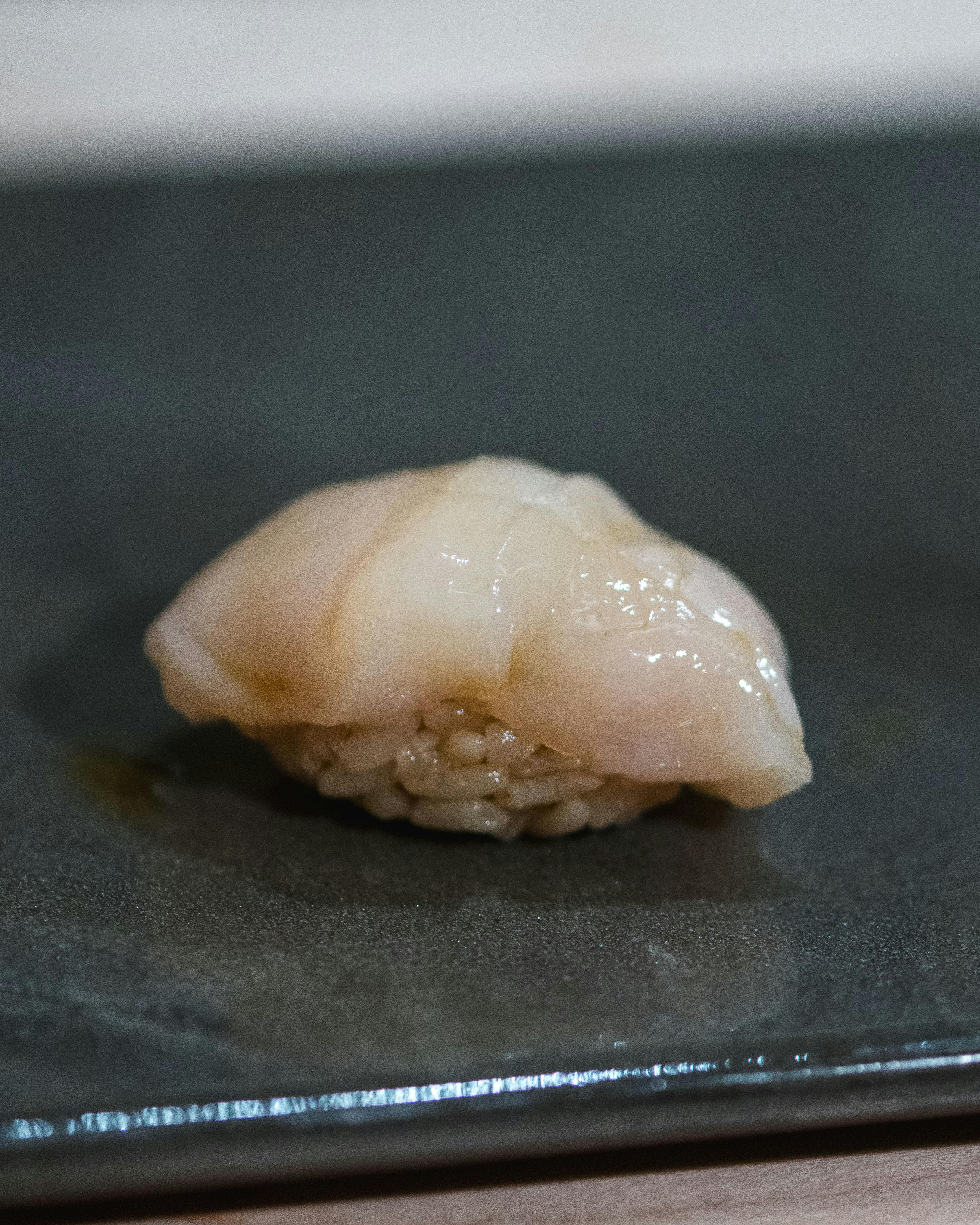
Sumptuously presented on beautiful dishes – all the tableware at Sushi Yūgen is hand-crafted by artists in both Japan and Canada – Chef Igarashi’s sushi symphony begins with houbou, blue fin robin, then segues into a freshwater scallop from Hokkaido, whose sweet taste and custardy texture offer a notable departure from more commonly available sea scallops.
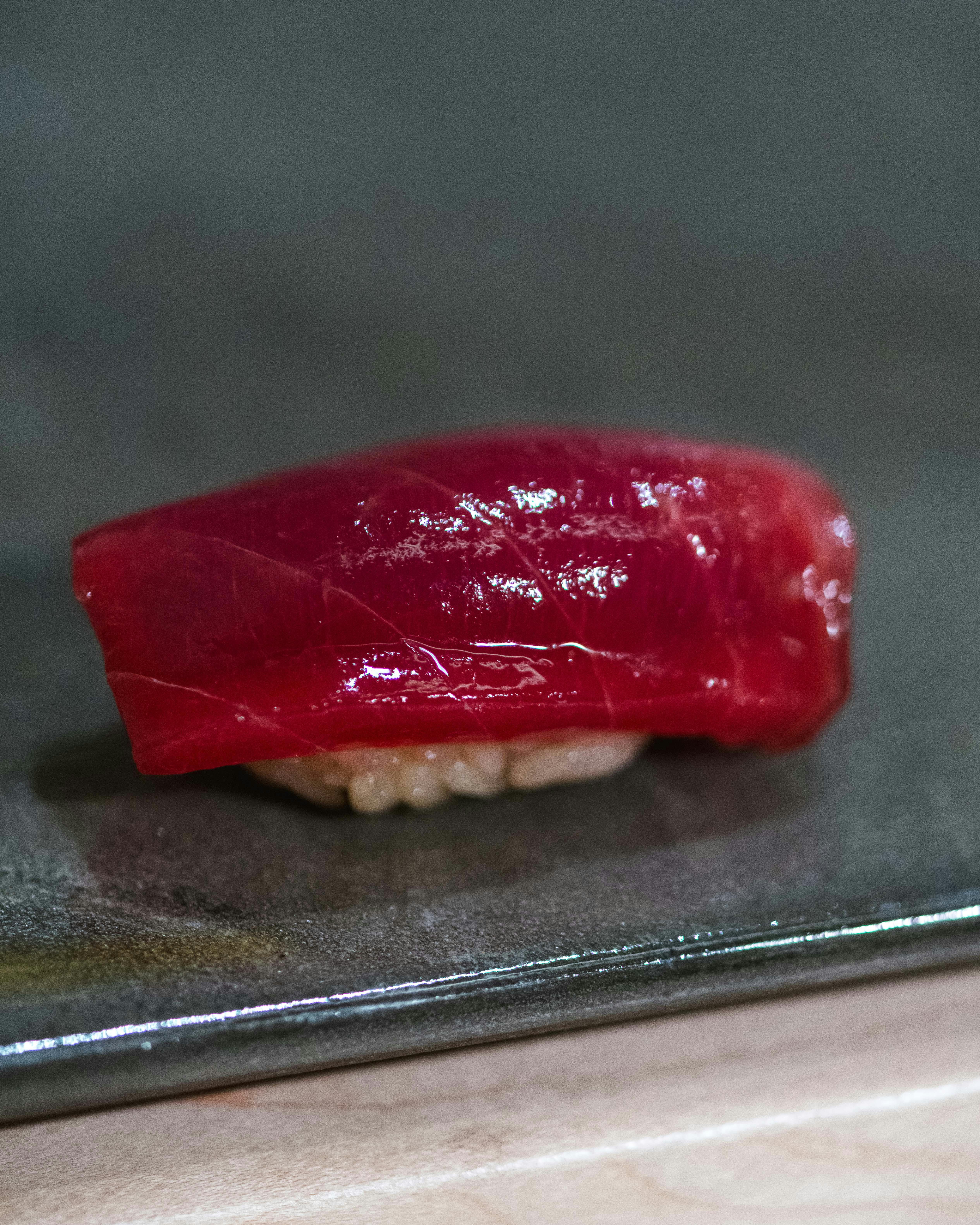
After kasugu, baby sea bream, whose silkiness attests to its heartrendingly tender youth, comes a triumvirate of bluefin tuna, served in ascending order of degrees of fattiness. The leanest of them all, akami zuke, is marinated in a briny soy sauce and is followed by a medium fatty chutoro, equally succulent.
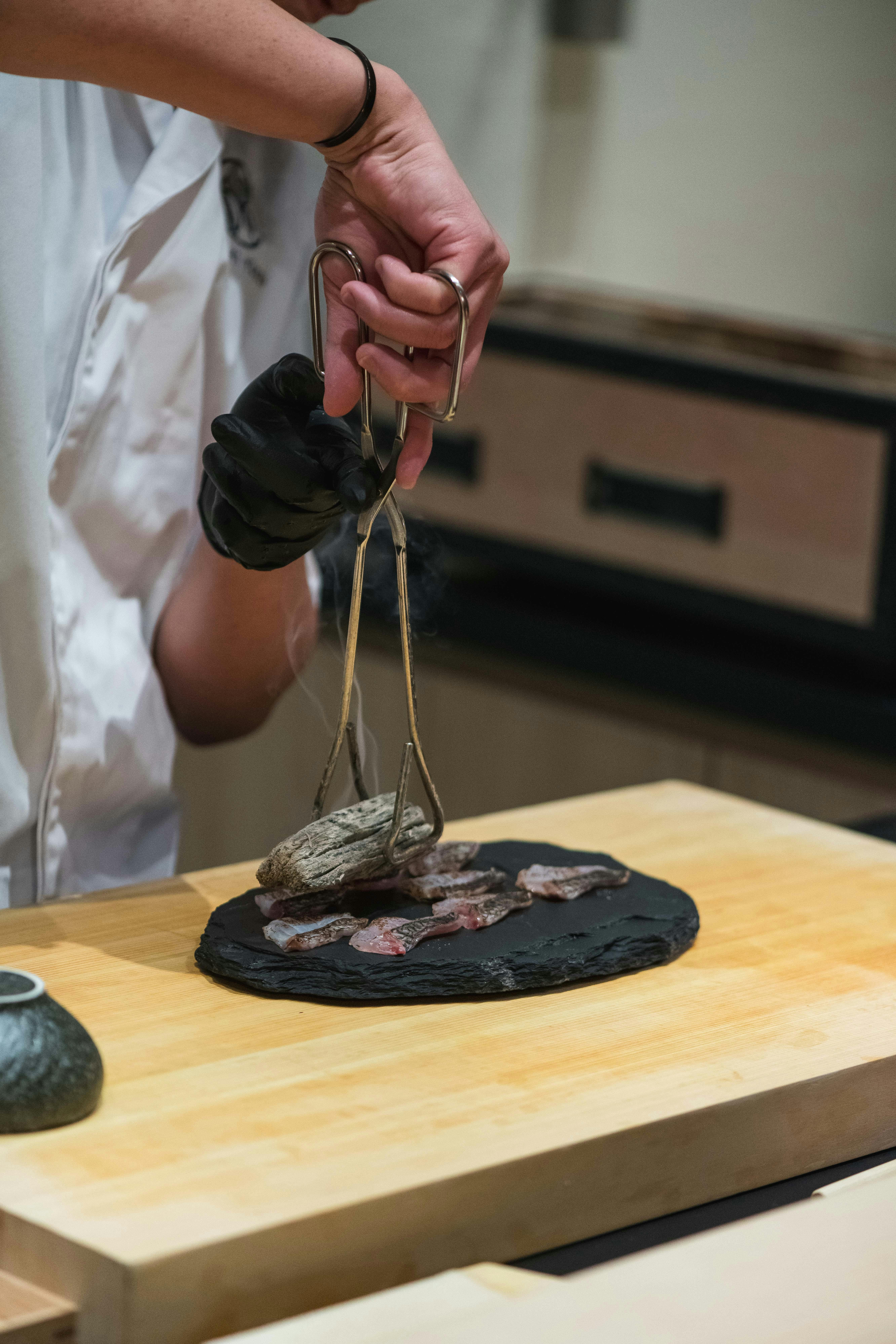
For the most richly fatty of them all, otoro, Chef Igarashi resorts to the element of fire, searing the fat beneath the tuna’s skin to coax out more flavour. Although a blowtorch is easier, and more common, Igarashi takes a more traditional – and aromatic – route, using charcoal from prized Japanese white oak to sear the fish to perfumed perfection.
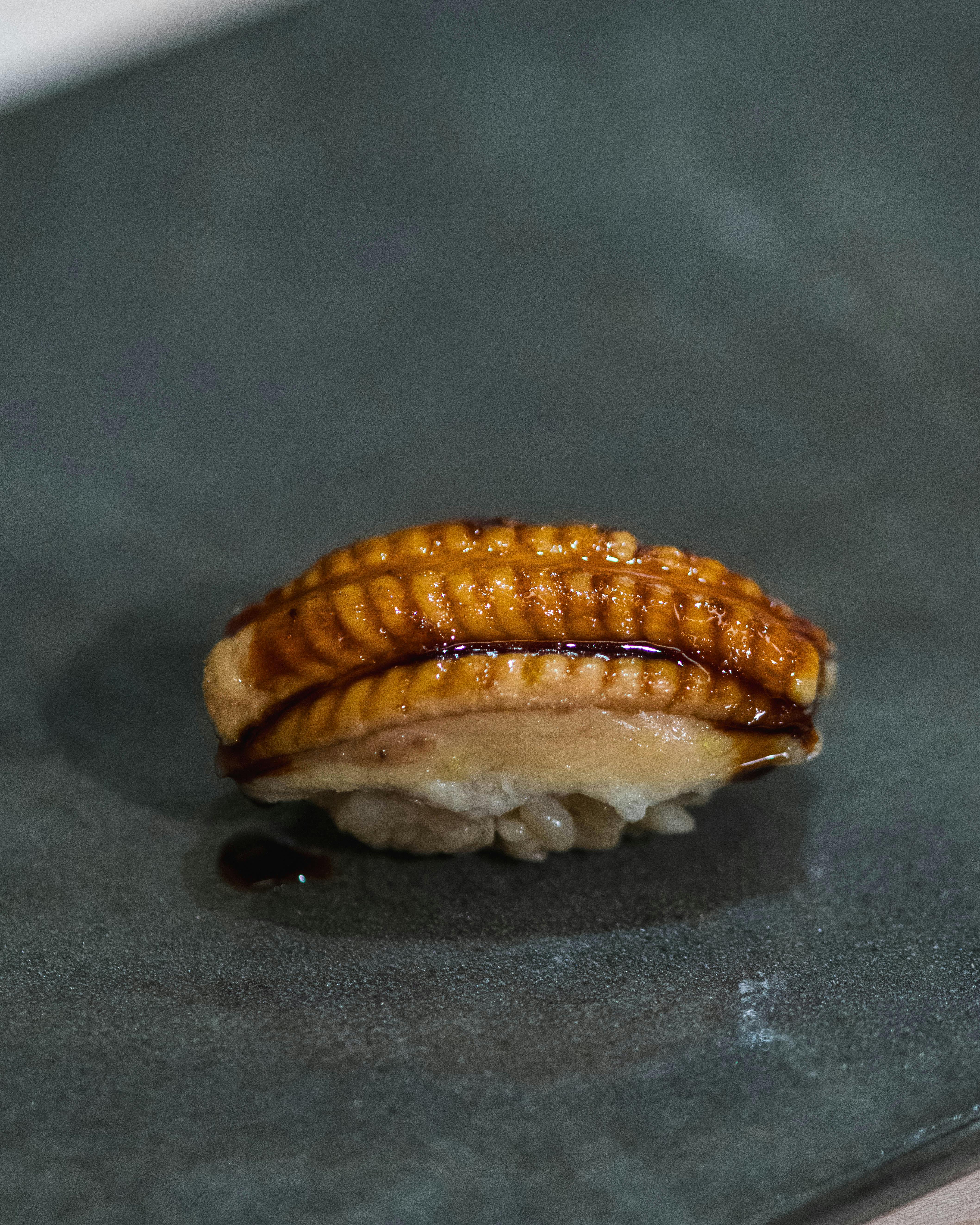
Rounding out the sushi offerings are kuromutsu saikyozuke, Japanese bluefish marinated in miso, and anago, conger eel, whose opulent butteryness is reminiscent of foie gras. To amp up the flavour even further, it’s served in a reduction of marinated eel. As Tam explains, arriving at the perfect reduction is a time-consuming process akin to creating the perfect sourdough starter. Indeed, once chefs have perfected their starter sauces, they will carry these guarded treasures around with them from kitchen to kitchen, sometimes for years.

As the final act winds down, it’s time for some light palate cleansers. In addition to miso soup, there’s tamago (egg), which arrives in the form of a sponge cake, its cloud-like texture explained by the swapping out of flour for Japanese mountain yam.

There’s also an epilogue: homemade white sesame ice cream, swimming in a crimson plum compote. The dessert comes garnished with a crisp white sesame biscuit, in the shape of a tree, one of whose strikingly transparent, amber leaves, is made from Japanese whisky.
As you contemplate life, a sweet whisky leaf melting inside your mouth, you’ll be hard-pressed to refer to the past two-and-a-half hours and 17 courses of your life as a dinner. No way around it: it’s an experience, one as undefinably profound, powerful and mysterious as yūgen itself.
Recommended For You